Today’s Hearing Devices are Not Your Grandmother’s Hearing Aid!
Hearing loss has been a problem for as long as humans have been around, and because hearing loss affects people’s ability to connect and form relationships with others, hearing devices were quickly developed to help those who could not hear. Here’s a short history of hearing aids — a brief guide to how we got to where we are today.
Pre-electric (acoustic) hearing aids
These ear trumpets captured sound waves, sending them down a tube to the listener’s ear. They were big, bulky, unattractive, and, frankly, they didn’t work very well. Of course, these were state-of-the art “hearing aids” for centuries until electricity became available.
Carbon hearing aids (1900–1939)
These were the first electric hearing aids. Carbon was used to amplify electric current to boost the volume of sound. However, they were bulky, buzzy and downright ugly. Though for those with hearing loss, they were the only choice.
Vacuum tube hearing aids (1921–1952)
Vacuum tubes were used to control the flow of electricity, and, as such, they did make hearing aids a little better. However, these boxy devices were usually tabletop models about the size of a clock radio, so the user had to carry around a heavy box and plug in to hear what was going on. There weren’t many controls or features, so these devices amplified all sound. That must have caused more than a few headaches back then. But hearing instruments continued to improve.
Transistors to the rescue (1952–1970s)
Transistors enabled hearing aids to fit into a smaller shell. The first transistor hearing aids appeared in 1952 — two years prior to the first transistor radios, which came along in 1954. Transistor hearing aids were still big and bulky, with the electronics in a box carried on the body and earphones connected to a tangle of wires. Not very convenient, to say the least.
Researchers shrunk transistor hearing aids over the years, making them small enough to fit behind the ear and even in the ear. However, they were anything but low-profile. They also didn’t come packed with features the way today’s hearing aids do.
Digital hearing devices
Today, quality hearing aids use digital technology — circuitry that’s used in computers and cellphones — and what a difference a few decades and countless hours of research and development have made!
Today’s digital hearing devices are sleek, discreet, fashionable, high-tech, and low-maintenance. They can be programmed to suit your specific hearing needs by an audiologist. Most adjust automatically for changes in volume levels and adapt to background noise. And now, with FM, infrared, or Bluetooth technology, they can connect to multiple devices such televisions and telephones. Did you know that the new Bluetooth capability will allow you to answer you cell hands free, and route the call through both of your hearing devices?
Your hearing is very important and contributes greatly to a better quality of life, and you should do everything you can to make sure you find the right hearing center for your needs.
Finding the right audiologist can be as easy to answering a few simple questions. First, is there a licensed, board certified, and experienced audiologist on staff? Then consider…
1. Is this professional willing to make a referral for a medical evaluation to rule out the need for medical or surgical treatment, if necessary?
2. Will the audiologist communicate effectively with you about hearing aid choices and fitting options, if hearing aids are appropriate for your hearing loss?
3. In determining whether a hearing device is appropriate, will the audiologist speak to you clearly about your hearing loss, lifestyle, manual dexterity, and budget?
4. Does the hearing center offer a wide range of hearing aid makes and models from various manufacturers?
5. Will you receive assistance and training regarding how to wear and care for your hearing devices , as well as how to adjust to wearing them?
6. Does the hearing center offer lengthy trial periods, warranties, and loss and damage protection?
7. Will they provide follow-up care following your hearing aid fitting, at least every six months?
8. Is the hearing center open at least five days per week, with an audiologist on staff to provide emergency care or loaner hearing aids if needed?
9. Will you always see the same audiologist when you visit?
If you have answered yes to all of these questions, you can rest assured that you have taken the right steps in finding a reputable dispensing practice. Of course, answering some of these questions might require more research than just exploring online. Call the hearing centers in your area to see how they answer your questions. Once you find one you are comfortable with, schedule an appointment for an initial consultation and hearing test.
So remember, if you’re looking for the latest and the greatest in hearing loss solutions, visit Doctors Hearing Clinic for more information and counseling. Forget everything Grandpa told you about his hearing aids. Those days and those hearing aids are long gone, thankfully. Today, you can enjoy the sounds of life without a lot of hassles. Modern digital hearing aids deliver sound quality and ease-of-use in small, attractive devices. Seek a board certified audiologist to explore the world of high tech hearing devices that are now available – and see for yourself that this is NOT your grandmother’s hearing aid!

